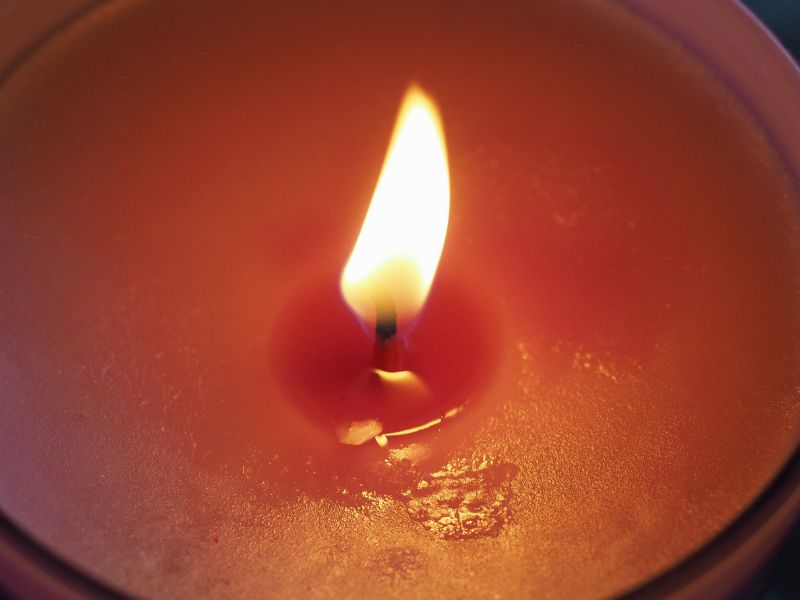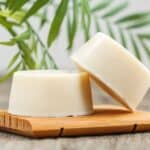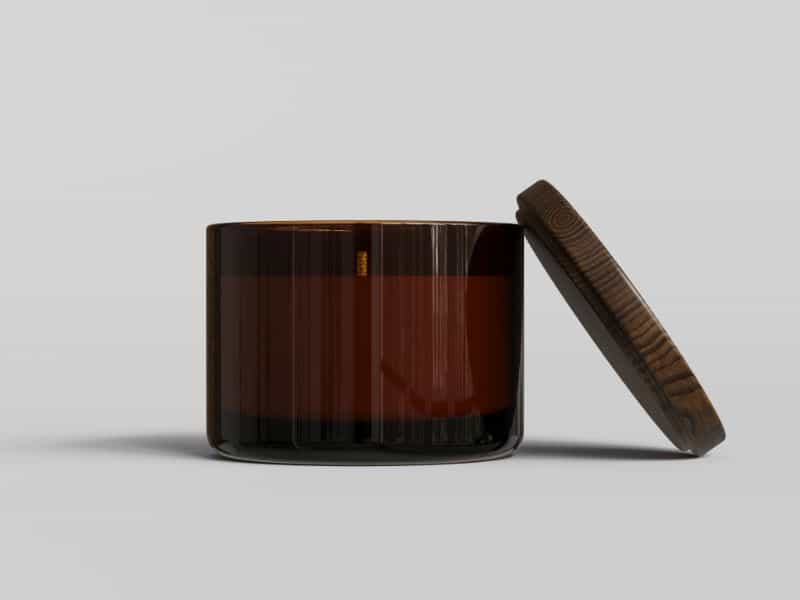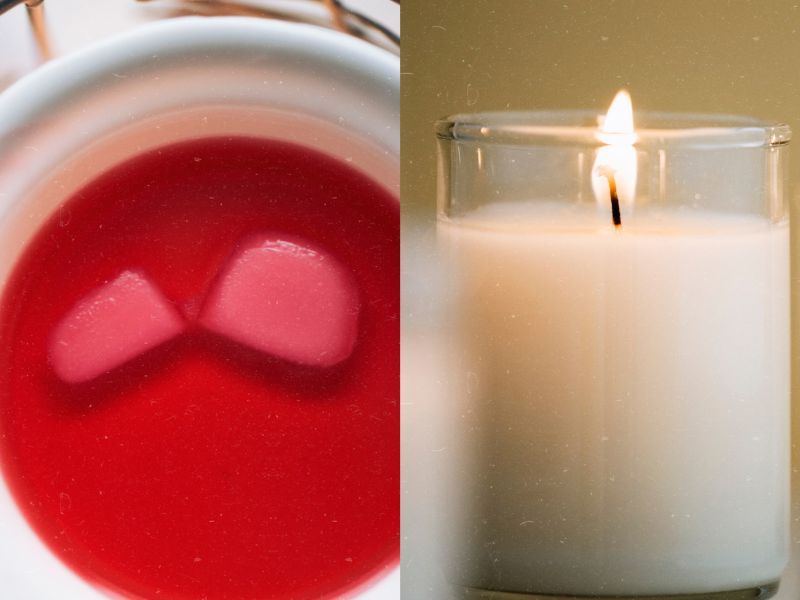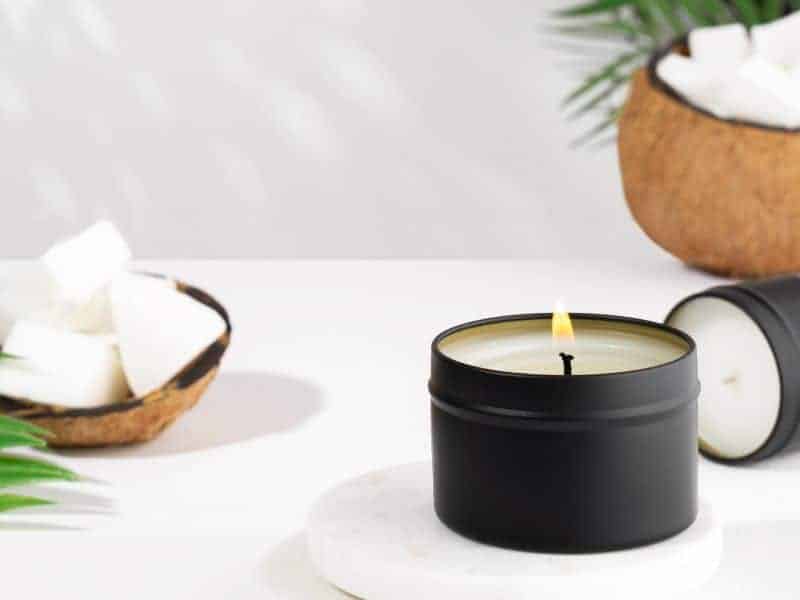Scented candles play a vital role in enhancing the ambiance and mood of a space. They create a relaxing environment and allow you to express your personality through different fragrances. However, crafting the perfect homemade scented candle can sometimes be challenging.
Weak scent or no scent in homemade candles can result from insufficient fragrance load, poor quality fragrance oils, inadequate wick selection, improper mixing techniques, and insufficient curing time. Experimentation with these factors can help improve scent throw.
Homemade candles may encounter problems such as uneven burning, difficulty in lighting, and most commonly, a weak or absent scent. This article aims to help you troubleshoot scent-related issues.
In this guide, we will identify the causes of weak scent in homemade candles, provide solutions and tips, and ultimately help you create better-scented candles.
The Science of Scent Throw
Understanding Fragrance Diffusion
Fragrance diffusion is the process by which scent molecules are released into the air. When heat is applied to a candle, the fragrance oil’s molecules evaporate and disperse. Air movement also plays a crucial role in spreading the scent throughout a room.
How Scent Molecules Interact with Air
Scent molecules interact with the air through evaporation. As the candle’s wax melts, the fragrance oil’s molecules are released and travel through the air. Factors such as room size, ventilation, and temperature can impact this interaction and the overall scent throw.
Key Principles for Better Scent Throw
To achieve a better scent throw, consider these key principles: optimize your fragrance load, select the appropriate wick for your candle, and follow proper burning practices.
Troubleshooting Weak Scent Throw
Identifying Possible Causes
Weak scent throw in homemade candles can result from various factors, such as an insufficient fragrance load, poor quality fragrance oils, or an inadequate wick size.
Common Mistakes and Solutions
- Overheating wax during mixing: Overheating the wax can cause the fragrance oil to evaporate or break down, reducing the scent throw. Solution: Monitor the temperature carefully and follow guidelines for your specific wax type.
- Inconsistent stirring: Fragrance oil may not mix well with the wax if not stirred thoroughly, leading to an uneven scent throw. Solution: Stir the wax and fragrance oil mixture consistently to ensure proper blending.
- Rushed curing time: Not allowing the candle to cure for the recommended time can negatively impact the scent throw. Solution: Be patient and allow your candle to cure for the appropriate duration, typically between 24 hours and two weeks, depending on the wax type.
Steps to Fix Weak Scent Throw
To fix weak scent throw in your homemade candles, follow these steps:
- Evaluate the quality of your fragrance oil and consider using a more concentrated, high-quality option.
- Adjust your fragrance load, ensuring that you’re using the right amount for your wax type.
- Test different wick types and sizes to find the best option for your candle’s size, shape, and fragrance.
Testing Scent Throw
Cold Throw vs. Hot Throw
Cold throw refers to the scent strength of a candle when it’s not burning, while hot throw is the scent strength when the candle is lit. Both are essential for evaluating a candle’s overall scent performance, with the hot throw being more crucial for creating an aromatic ambiance.
Methods for Evaluating Scent Strength
- Sniff test: Smell the candle up close when it’s not burning (cold throw) and while it’s burning (hot throw) to assess the scent strength.
- Room test: Place the unlit candle in a small room, such as a bathroom, for a few hours to test the cold throw. Light the candle in the same room for the hot throw test.
- Comparison test: Compare your homemade candle with a store-bought one, evaluating the differences in cold and hot throw.
Tips for Improving Throw
- Use higher-quality, concentrated fragrance oils.
- Adjust the fragrance load for the optimal ratio.
- Experiment with different wick sizes and types.
How To Make Candles Smell Stronger
The good news is that there are a few things you can do to help your homemade candles get a scent or smell stronger.
Make your homemade candles smell stronger by adjusting the fragrance load, changing the wick type, and letting them cure longer before lighting them.
In addition, there are a few more things you can do. Let’s take a look.
Use Quality of Fragrance Oils
Selecting High-Quality Oils
Choose fragrance oils specifically designed for candles and sourced from reputable suppliers. Research customer reviews and recommendations to find top-quality options that enhance scent throw.
Diluted vs. Concentrated Oils
Opt for concentrated fragrance oils, which contain more scent per volume, resulting in a stronger scent throw. Diluted oils may lead to weaker, less satisfying scents in your candles.
Recommended Brands
Explore popular fragrance oil brands trusted by experienced candle makers, such as CandleScience, Nature’s Garden, and Bramble Berry. Keep in mind that personal preferences and desired scent profiles can influence the best choice for your candles.
Adjust Fragrance Oil Load
Importance of Right Ratio
The fragrance load, or the percentage of fragrance oil to wax, directly impacts scent throw. Achieving the correct ratio ensures a strong scent without compromising candle performance or overwhelming the room.
Too Much vs. Too Little Fragrance
Excess fragrance oil can lead to poor candle burn and an overpowering scent, while too little oil results in a weak scent throw. Find the perfect balance by experimenting with different fragrance loads.
Guidelines for Optimal Load
Consult your wax manufacturer’s guidelines for the recommended fragrance load range. For example, soy wax usually works well with a 6-10% load, while paraffin wax can handle up to 12%. Start conservatively and adjust as needed to improve scent throw.
Different Mixing Techniques
Proper Stirring Methods
Ensure thorough blending of wax and fragrance oil by stirring consistently for at least two minutes. Use a heat-resistant spatula or spoon and scrape the sides and bottom of the container to evenly distribute the fragrance.
Temperature Considerations
Adding fragrance oil at the correct temperature is crucial for optimal scent throw. Generally, fragrance oils should be added when the wax reaches its recommended “flash point,” typically between 180-185°F (82-85°C) for most waxes. Always consult your wax’s guidelines for the ideal temperature.
Ensuring Thorough Blending
Pour fragrance oil slowly into the melted wax while stirring continuously. Maintain a steady pouring speed and mix until fully combined to create a homogeneous mixture, which will help improve the overall scent throw.
Candle Wicks and Scent Throw
Role of Wicks in Scent Throw
Wicks play a significant role in scent throw as they impact the candle’s burn rate and heat distribution. The right wick ensures a consistent burn, allowing the scent to disperse evenly throughout the room.
Different Wick Types
- Flat wicks: Suitable for paraffin and soy candles, providing a clean burn with minimal soot.
- Square wicks: Ideal for beeswax and vegetable wax candles, offering a stable flame and self-trimming features.
- Cored wicks: Contain a central support (paper, cotton, or zinc) to provide rigidity, primarily used in pillar candles and votives.
Choosing the Right Wick
Selecting the correct wick depends on factors like candle diameter, wax type, and fragrance load. Test different wick sizes and types to determine the best option for your specific candle. Remember, a well-chosen wick will enhance scent throw and burn performance.
Cooling and Curing Process Improves Scent Throw
Effects of Cooling Rate
The cooling rate of your candle can affect the scent throw. Cooling too quickly may cause the wax to shrink, creating air pockets that can trap fragrance. Gradual cooling ensures even distribution of scent throughout the candle.
Curing Time and Scent Strength
Curing time is essential for achieving optimal scent strength. Allowing your candle to cure for the recommended duration helps the fragrance oil bind with the wax, resulting in a stronger, longer-lasting scent when burned.
Tips for Proper Curing
- Follow wax guidelines: Consult your wax’s guidelines for recommended curing times, which can range from 24 hours to two weeks.
- Store in a cool, dark place: Keep your candles in a cool, dark location during the curing process, away from direct sunlight or heat sources.
- Be patient: Resist the temptation to burn your candle too soon. Allowing it to cure fully will yield a more satisfying scent throw.
Burning Practices and Scent Throw
Proper Candle Maintenance
- Trim the wick: Keep the wick trimmed to approximately 1/4 inch to ensure a clean, even burn and prevent excess smoke or soot.
- Avoid drafts: Place your candle away from drafts or air currents to prevent uneven burning and ensure optimal scent throw.
- Burn evenly: Allow the candle to burn until the entire surface has melted, forming a full melt pool, before extinguishing.
Burn Time and Scent Throw
The length of time a candle burns can impact scent throw. Burning for too long may reduce scent strength over time, while burning for short periods can cause tunneling and reduce overall scent throw. Aim for a burn time of 2-4 hours for optimal results.
Maximizing Scent Production
- Optimize fragrance load: Adjust the fragrance load to achieve the perfect balance between scent strength and candle performance.
- Use high-quality oils: Invest in concentrated, high-quality fragrance oils designed for candles.
- Select the right wick: Test different wick types and sizes to find the ideal option for your specific candle.
Conclusion
In conclusion, various factors can cause weak scent throw in homemade candles, including insufficient fragrance load, poor quality fragrance oils, and inadequate wick selection.
Experimentation is key to crafting the perfect scented candle. Test different fragrance loads, wick types, and mixing techniques to find the best combination for your desired scent throw.
With patience and practice, you can create homemade scented candles that fill your space with delightful aromas. Embrace the learning process and enjoy the satisfaction of crafting unique, fragrant candles tailored to your preferences.

